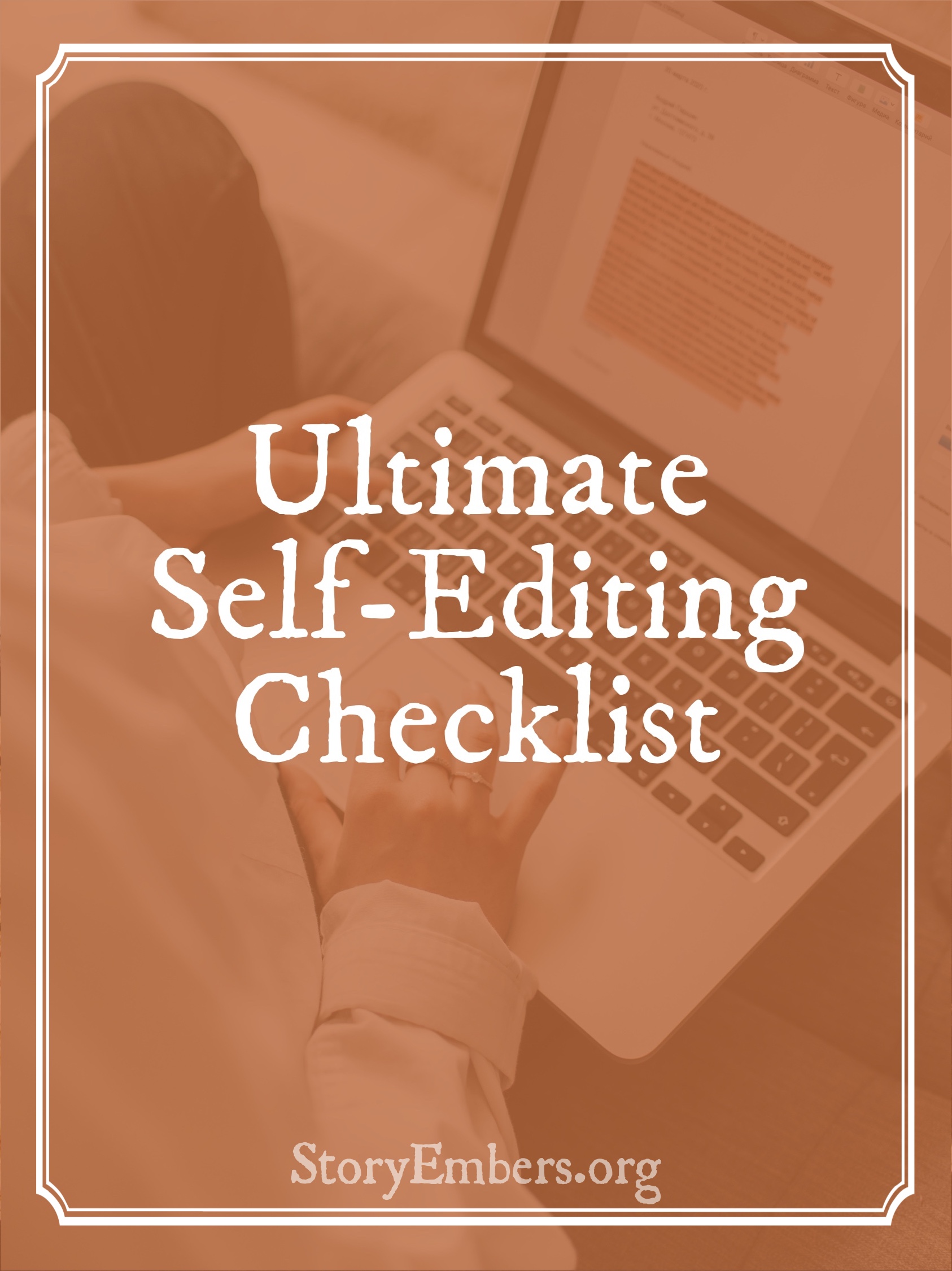“You wrote a great story, but it needed a proofreader.”
No one likes to hear that their writing is full of mistakes. Whether we’re submitting to a website or writing a story for family, we slave over our words. We don’t want our masterpieces diminished by typos.
As writers, our job is to keep readers immersed in the story or article we’ve prepared. Misspellings, absent punctuation, and incorrectly used words rip readers away. If a manuscript is riddled with errors, achieving traditional publication will be hard, and self-publishing it will likely result in poor reviews. Nothing shouts amateur to an agent or reader like an author who didn’t make the effort to proofread.
What’s a writer to do? Should we fork over the money to hire a proofreader for every project? Professional proofreaders have their place, but I believe we can catch many errors on our own if we know how to hunt for them.
Some people are fantastic at proofreading. I was not one of those people. I had to train myself to detect errors once I decided to become a writer. I took a proofreading class in college, hoping it would sharpen my skills, and I discovered I enjoyed it. Since then, I’ve proofed marketing content at my former job, stories and articles for friends, and short pieces for a local guild I’m part of. Through those experiences, I’ve learned techniques to eliminate pesky typos without killing all my brain cells.
1. Lock Your Document Away
After finishing your draft, stash it somewhere for a while. If you immediately turn around and start proofreading, your words will be at the forefront of your mind, which camouflages errors. Distancing yourself from your work is essential to resetting your brain.
With deadlines, you won’t always have the luxury of endless time, but even a few days away from the project can help immensely. For me, the longer the manuscript, the longer I set it aside. With an article, I might avoid looking at it for a week, whereas I’ll usually put down a novel for at least two months.
You need to give yourself time to forget anything you may have subconsciously memorized so that you can see each word anew when you return. In the meantime, try writing something else or reading pieces by other authors. Anything to distract yourself from the manuscript you’ll be proofreading.
2. Check for Easy Fixes
Once the waiting period is over, you can come back with fresh eyes and comb through your manuscript. This is when you’ll spot the most obvious problems.
Run your word processor’s spelling and grammar checks. Many authors and editors also like to use the free app, Grammarly. These tools aren’t foolproof though, so be careful to examine the context when a word or phrase is flagged. My stories often involve royalty, and grammar check can never decide whether I meant “Your Highness” or “You’re Highness.” Automated programs sometimes mess up names, capitalization, and word order, so don’t assume you need to repair everything that’s underlined. Familiarize yourself with grammar rules, and if you’re unsure about something, verify it with a reliable source.
3. Change the Text’s Appearance
After you’ve studied a piece a couple times, your brain will begin to fill in the blanks instead of pointing out a mistake. Changing the font, color, and letter size tricks your brain into noticing errors like missing punctuation.
You can also adjust the zoom level and margins on your document, or paste your text into another program. Google Docs looks drastically different than Microsoft Word, and sometimes a different view will reveal a mistake you originally overlooked.
I like to convert my Word document to a PDF and read it on my Kindle app. The smaller portions of text help me focus on individual sentences instead of the piece as a whole.
4. Print Out Your Manuscript
This is easier for short pieces, but I do it with my novels too. If you’re planning to print lengthy documents, I recommend using 12 pt. Times New Roman, single spaced. If the text is too tiny, you’ll strain your eyes trying to read it. Number your pages so you can navigate the digital file to incorporate any tweaks you mark on paper. I set my printer to draft quality, which is dark enough to be legible but won’t consume all my ink.
Escaping from a glowing computer screen brings out typos. One method of catching problems is to trace each word with your finger. This slows your reading pace and forces you to pay attention to each syllable. A hard copy also allows you to proofread in your recliner instead of at a desk. Comfy proofreaders produce clean manuscripts.
5. Read Your Work Aloud
This is my favorite tactic. While the mind can autocorrect a word or punctuation, the tongue usually can’t. You’ll hear how your sentence structure flows and if you’ve placed punctuation correctly. A great variation of this is to enlist someone to read your work to you. (If it’s short. Don’t ask someone to read your 100K fantasy novel.) Hiding the words from your eyes and just listening makes you concentrate on how your writing sounds. If something is confusing or awkward, you’ll quickly notice.
Alternatively, you can have your device read to you. Microsoft Word, Google, and Chrome all have text-to-speech functions, and several apps have this capability as well. The voice will be robotic, but it is definitely an option if no one is available to read for you.
6. Search for Trouble Words
Do you frequently misspell certain words? Enter each one in the Find and Replace box. I always have to confirm I used its and it’s correctly. Other common confusables include there, they’re, and their, or too versus to. Even if you know the proper usage of these words, you might have gotten absorbed in typing and erred.
Consider creating a stylesheet that lists dates, name spellings, settings, and character descriptions, then check those details during proofreading. This will expose inconsistencies like a character’s eye color switching from green to blue halfway through the manuscript.
Find and Replace can ferret out overused words too. My characters tend to shrug and raise their eyebrows excessively, so I search for both of those mannerisms and cut the unnecessary fillers. This can be time consuming, especially if you have multiple trouble words or pet phrases, but you’ll filter out numerous mistakes this way.
Do Your Best and Move On
Once you’ve followed these steps, you can decide whether you prefer to hire a final proofreader. Usually I’m confident in my manuscript by the time I’ve arrived at this point, so I go ahead and submit or query my piece.
However, keep in mind that one or two errors may be hiding away somewhere, but that won’t brand you as an amateur. A typo can happen to the best writers, and some even slip past professional proofreaders at large publishing houses. You won’t be rejected over a typo or two. But you don’t want to send off a manuscript rife with grammatical errors and misspellings. These tips will rescue you from that.
If you’re still uncomfortable sharing your work, find a good editor and hire her. But go through these steps first. Self-editing won’t necessarily lower an editor’s fee, but it will reduce the number of editing rounds you need, and that will save you money. We all know writers need cash for more important things like pretty notebooks and ballpoint pens.

Maddie Morrow grew up with her mom reading to her and her dad telling stories about cowboys hunting Bigfoot. The combination sparked her love of writing early, and she’s been lost in her notebooks ever since. Aside from writing, she enjoys loud music, good horses, and hardcover books. She lives on a farm in Nebraska with her husband and children. Her Gaslamp novella, Red as Blood, won the 2018 Snow White retelling contest hosted by Rooglewood Press, and it released in December 2018 with the Five Poisoned Apples collection.


















Hey, this is really helpful! Thanks for the tips!
I’m glad!
Wow, thanks, Maddie. I’m currently revising, I shall apply these concepts. I also use shrugging and shaking heads a bit too much. I’ve tried to come up with new beats based on the characters but just cutting some out I think would also help.
Good luck with your revisions! Yes, sometimes it’s best to just leave beats out altogether, but sensory details and the surrounding setting can also be used in place of shrugs and stuff.
Super helpful! Thank you very much, I’ll apply it right away.
I’m glad it helped!
Thanks so much, Maddie! This was really helpful and I’m going to be keeping this handy.
One of the reasons I love Story Embers is because the articles you guys write are so practical and helpful. Instead of just chucking random information at us, you help us realize how we can apply the things you teach us to our own writing and give us the tools we need to do it. Thank you!!
I’m glad you can use it, Eden!
That’s why I like Story Embers too! I’m always browsing the latest articles to learn something new.
Great post Maddie! Thanks for sharing it. 🙂
Thanks!
I’ve always wondered about stashing a manuscript away when it comes to really long novels. The one I’m writing now will probably turn out over 250,000 words. Ideally, I’d want to set it aside for a couple months, but considering how long it’s already taking to write, a couple months additional time feels like an eternity. Finding the perfect balancing act drives me crazy and sometimes I don’t take a break…
But you’ve reminded me that a break is important, so thank you.
Yeah I totally understand it feeling like it takes forever to wait, but I can’t recommend it enough. I’d go insane if I didn’t give myself that down time in between rounds of edits.
wow, Maddie! this stuff makes sense! I never thought about it, but everything you said really makes sense! thanks for the work you put into this!
I’m glad you like it!
Great advice; very concise and helpful. Bookmarked this for future reference. Thanks again, guild master.
You’re welcome, sir
Thank you so much for this!! I’m always scared of the proofreading part of writing lol. Thanks for writing this.
yesss to pretty notebooks 😂 great article!
Ah, so helpful. Thanks!! I’m working on editing my third draft now, and will go through one more round before attempting to find a professional proofreader/editor. 🙂 Thanks!